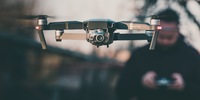
Guide
Drone buying advice: you can let these aircraft fly
by Jan Johannsen
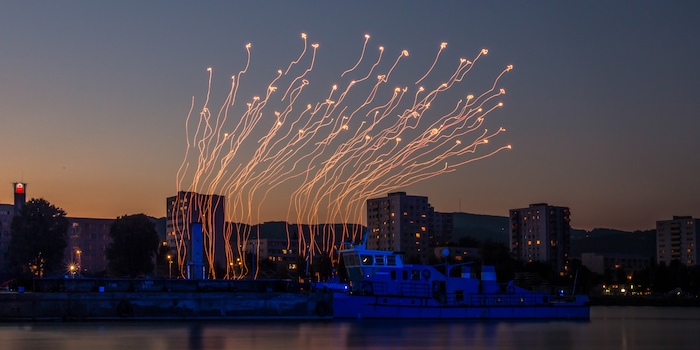
Drone shows are like fireworks: a thoroughly orchestrated spectacle. It's impressive and requires meticulous preparation. So far, it has little to do with swarm intelligence, but it doesn't have to stay that way.
November 2015, in the evening, near Hamburg. A light show with 100 drones takes to the stage. It is an unrivalled spectacle, a classical orchestra including a grand piano has been transported to the airfield and Beethoven's Ninth is being played. A representative from the Guinness Book of Records is present. Because a world record is to be broken with the number of drones used.
But this is just the beginning. The opening show of the 2018 Winter Olympics in Pyeongchang is already showing 1218 drones on sale, and this summer over 2000 drones will take part in a parade to celebrate Intel's 50th anniversary. This is the Guiness world record to date. In this video, you can see from minute 0:50 onwards how the countless flying objects move along different, complex paths.
Drone shows are the new fireworks. But how do they actually work?
The fact that the world record was broken for the last time on Intel's anniversary is no coincidence. A special drone team from Intel is the driving force behind the record chase. Intel does not use commercially available drones for these mega-shows. This is because the drones have to fulfil a number of requirements:
For the first world record, Intel has teamed up with Ars Electronica, an organisation based in Linz, Austria, which focuses on the interplay between art, technology and society. Since 2012, the organisation has been working on a special drone that is suitable for such shows. The developers see the drones as pixels in the sky and therefore call them Spaxels. Each drone has a large LED that can display over 4 billion colour and brightness levels. They are light and robust. If necessary, a kind of cage around the drone prevents the missiles from getting into each other's way.
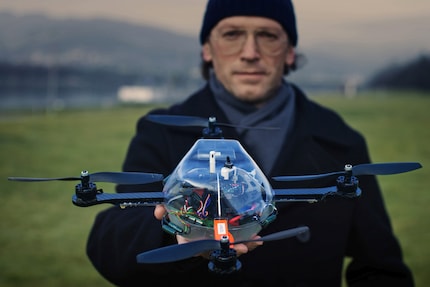
At CES 2018, Intel used its own development, the Intel Shooting Star Mini Drone. This small drone is designed for indoor shows. It must therefore be able to be controlled without GPS and be able to keep itself in position without GPS.
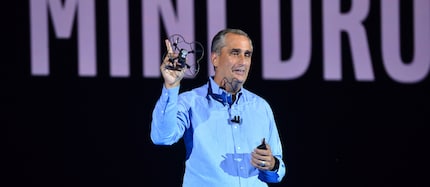
The big challenge of the shows is not the hardware, but the software. The countless drones are programmed and controlled centrally. The choreographer defines the various scenes of the show in a 3D animation programme. The software then calculates the flight route for each individual drone. And it does so in such a way that there are no collisions and the change between the formations is still quick. Fast changes not only make the show more exciting, but are also important due to the short battery life.
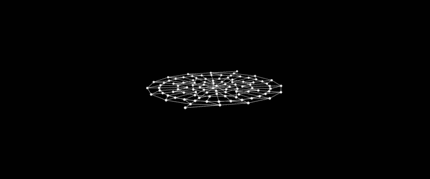
Very fast changes between the figures are simply realised by first lighting up drone group A, then drone group B.
In the end, there is only one drone pilot for the entire show, who doesn't do much more than press the start button. The real work is the preparation. The show has to be elaborately choreographed and carefully tested. The very first world record show with the 100 drones required months of preparation.
Ars Electronica - or rather the Spaxels Research Initiative that emerged from it - calls its software swarmOS. But this swarm behaviour is controlled centrally and has little to do with a real simulation of swarm behaviour. The real kicker for me would have been if the drones had acted autonomously. Theoretically, it would be possible to organise a drone show in this way. There have already been attempts in this direction, but so far swarms of drones are still more the domain of dry scientists than event specialists.
For a long time, it was a mystery to scientists how flocking behaviour works. Birds, for example, form aerodynamically optimal V-formations without any command from a boss bird. The V-formation arises as a result of each individual orientating itself in a certain way towards its flight neighbours - for example by keeping neither too large nor too small a distance. Researchers only discovered the exact mechanisms when they were able to simulate and recreate such systems with the help of computers and robots. A milestone in this area was the simulation Boids.
Just as birds can manage without a commander, autonomous drones no longer need a centralised control system that calculates each flight route individually. If there is still a control centre at all, it would only provide rough guidelines on which formation to reach, but would no longer dictate which route the individual drones should take to reach their destination.
Swarm behaviour can also be used to create complex images or movement sequences. This utilises the fact that the drones independently avoid obstacles. If the drones are presented with imaginary obstacles in the sky, they fly around these invisible obstacles to form certain figures. You can see this in the following video from minute 3:10.
Strictly choreographed shows like the one at the opening ceremony of the Winter Games with complicated, rapidly changing images are probably not possible. Or at least it would take much longer for the drones to get into position. However, I would find it fascinating to observe self-organising swarms of drones - also because, in contrast to the fully orchestrated show, there is still room for the unforeseen. And that could be scaled up quite easily. So I'm waiting for the one light show with several thousand self-organising drones.
My interest in IT and writing landed me in tech journalism early on (2000). I want to know how we can use technology without being used. Outside of the office, I’m a keen musician who makes up for lacking talent with excessive enthusiasm.